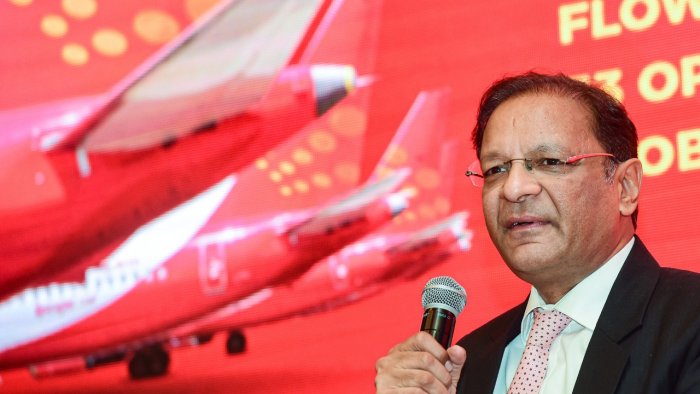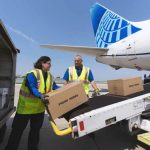India’s airline industry soars but on a flight-path of profitless growth
India’s airline industry is gung-ho about growth prospects, emerging stronger post the third wave of Covid-19. Passenger and cargo numbers are accelerating fast with passenger traffic projected to reach about 167 million next year.
While that is heartwarming, what is worrying the captains of the airline industry is that the sector is on a trajectory of profit-less growth.
At Wings India 2022, this aspect came out loud and clear. The airline leadership have been making noise about it such that the powers that be take notice. The Minister of Civil Aviation, Mr. Jyotiraditya M. Scindia assured them that the Ministry would play the role of a ‘constructive collaborator, not a restrictive regulator’.
The intent of the political leadership is clear, but the bureaucracy has its own ways of working. One of the Joint Secretaries in the Ministry told the airline heads that ‘airlines survived prior to the pandemic, during the pandemic and would continue to’, but assured to look into their concerns.
 What are the major concerns of Indian airlines?
What are the major concerns of Indian airlines?
First and foremost, high taxation (11% excise duty and Goods and Services Tax known as GST of 5% for economy class and 12% for premium class) is hitting the airlines hard. Then there is the issue of rising fuel prices and we all know that aviation turbine fuel accounts for between 35 and 40% of the operating costs of an airline. Finally, India being predominantly a low-cost market (80 % accounted for by low-cost carriers), low yields have become the norm.
GST a handicap for airlines
The Chairman and Managing Director of SpiceJet Ajay Singh said “We have been talking about the same thing for 15 years. No country in the world has put GST on its airlines, in India we have and that is a handicap for airlines. There is GST, 11% excise duty, oil prices going up, making the sector chronically ill.”
However, he felt that airlines needed to get the cost-base right and it was not just related to fuel. “We have large amounts of GST credit, but the government says we can use them later, but what GST we have to pay, they want it immediate. Adding to the squeeze is the banking sector which is not giving credit.” Airlines have incurred huge accumulated losses and the government needs to be more considerate.
However, Singh commended the government for the regional connectivity scheme (RCS) popularly known as ‘UDAN’ that is transforming the aviation landscape. The tax-break through viability gap fund (VGF) is laudable under ‘UDAN’. “India added 60 airports in quick time and today SpiceJet has 70 flights to airports which we were not flying to.”
Indigo getting 4 new freighters
The Director and CEO of IndiGo Ronojoy Dutta was more optimistic as he believed in the India growth story. “We are at the cusp of exciting growth. We have ordered 500 planes and we are optimistic about the future. We are seeing growth, though it is profitless growth.”
Dutta said giving 21% indirect tax to the Government is an issue which it needs to address immediately. However, it is for the airlines to figure out how to expand capacity as more and more people are flying.
 On international routes, 65% of capacity is carried by foreign airlines and that needs to be corrected by the domestic airlines themselves and airports.
On international routes, 65% of capacity is carried by foreign airlines and that needs to be corrected by the domestic airlines themselves and airports.
The Middle East has excellent hubs as the transition is fast and smooth, while in India Terminal changes take 2 to 3 hours. There is need to improve airport and airline efficiencies, if some major cities in India can become international hubs.
Between April 2021 and January 2022, Indian airlines carried 146.88 million (16.39 million international) passengers and 2619.21 (000 ton) freight (international accounting for 1641.45 mt) and these numbers are expected to grow exponentially, calling for capacity expansion both by airlines and airports. Pre-pandemic the figures were: April 2018 to March 2019, passengers carried 344.69 million (275.21 domestic and 69.48 international) and freight was 3561.90 (000 tons) with international cargo accounting for 2200.18 (000 tons). The figures for April 2019 to March 2020 were 341.05 million (domestic 274.51 and international 66.54) passengers and freight 3328.29 (000 tons) with international accounting for 2003.12 (000 tons).
With 1.3 billion people and an economy rapidly growing, India’s airline sector is going to see a surge in both passenger and cargo movement. The government has stepped in to push domestic airlines to carry more cargo.
Indigo is expanding capacity. “We are getting 4 new freighter aircraft,” Dutta said. On the other hand, Spicejet which has Spice Xpress, its logistics arm, operates three Boeing 737-700 freighters, two 737-800Fs and 3 Bombardier DHC-8 400s and its revenue from cargo operations increased 518% during FY 2021 at Rs. 146 million USD, recording a profit of USD 17million.
Fare hike on the horizon
As the airlines are having low yields, airlines are expecting a fare hike, to offset the rising fuel costs, but the market leader, Indigo has not made the first move yet. Sunil Bhaskaran, CEO and MD of Air Asia India, talked about how airfares may see an upward trend if the fuel costs and other inputs do not show any downward movement.
Airlines, he believes, will have to re-invent themselves to become profitable and that India had tremendous opportunity for growth with airlines expected to carry 167 million passengers next year, a positive sign amidst all the pandemic gloom. But Indian airlines are straddled by high fuel costs and indirect taxation, despite being most efficient airlines in the world.
Akasa Air to start in June this year
Founder and CEO of Akasa Air, Vinay Dube said “this is India’s story, not Indian aviation story” and as part of that the country would need 2,000 new airplanes in the next 20 years. He mentioned how in 2010, the fuel price was $110 per barrel and airlines did make money then. “While we should hope to get tax respite, we should find ways to become more efficient.”
Greater use of technology has potential to drive profitability. He said Akasa Air would start commercial operations from June this year and 18 aircraft within a year and 72 aircraft fleet in 5 years. Akasa Air is a new airline, backed by billionaire Rakesh Jhunjhunwala who is known as ‘India’s Warren Buffet’.
Air India under Tata Group
Winning the disinvestment bid of Air India was one thing for the Tata Group, running the ailing national carrier is going to be altogether another big gamble. But the Tata Group is capable of turning around Air India, the airline which they started before the government took it over and made a mess.
Tatas will have to pump in nearly USD 5 billion over the next five years if it has to transform the national carrier to its past glory—pride of India—and more importantly make it profitable. Tatas won the bid of USD 2.4 billion and it has taken over a debt of nearly USD 2 billion which has been refinanced by new lenders.
Turnaround roadmap
Tata Sons Executive Chairman N. Chandrasekaran who was appointed Chairman of Air India has laid down a turnaround roadmap for the ailing airline. The new management has been given a mandate to a) provide ‘best in class customer service’; b) to be the ‘most technologically advanced airline in the world’; c) new fleet and expanded network; and d) best of in-flight and off-flight hospitality. Indeed, this is going to be a tough ask.
According to industry experts, the new management has to focus on single airline entity instead of three (investments in Vistara; and Air Asia India) and rationalize capacity by avoiding loss-making routes and concentrate on international routes.
Chandrasekaran talking to Air India employees said: “We are committed to making Air India a world class airline. I am confident that working together we can achieve that goal much faster.”
“At the Tata Group we are fortunate to have several iconic brands like Taj Hotels, Tanishq, Tata Salt and JLR. With many consumers facing companies, we are fortunate to touch the lives of 600 million Indians. With Air India joining we have the opportunity to become a brand that represents aspirations of 1.3 billion Indians.”
Challenging mix of aircraft
The carrier currently has 153 planes in its fleet, including 49 wide-body aircraft manufactured by Boeing and Airbus, and jets from the best-selling 737 and 320 families. This mix of aircraft has been a challenge for the airline as each aircraft type requires separate skill sets of pilots and crew. Air India’s average fleet age is more than 10 years.
The CEO of Vistara, Vinod Kannan, said he was not privy to what future Vistara had after the Tatas have taken over Air India, but said the full-service carrier was doing well in a market which was predominantly (80%) low-cost.
Emirates to run 100 % from March 27
Mohammad Sarhan, Vice President, India & Nepal, Emirates Airline, was delighted that international flights from and to India would commence from March 27, 2022 and that it would deploy 100% of its flights to India on the said date. There is high travel demand, driven by MICE, families visiting etc. Emirates is the biggest foreign airline operator in India providing international connectivity.
Indian airlines have to add capacity
The Joint Secretary, Ministry of Civil Aviation, M. Satyendra Kumar Mishra agreed that fuel costs and capacity constraints at airports were holding back airlines. “Over a period, taxation has come down. Airlines survived before the pandemic, during the pandemic,” he said and added that the government was aware of constraints and assured that there would be solutions.
Mishra said Indian airlines did not have huge capacities like the foreign airlines had and suggested to the industry that some of them should just focus on international routes which are dominated by foreign airlines. The case with cargo is similar, while exports are growing, there is no airline capacity.
The captains of the industry felt that though in the short term there was turbulence, India had the advantage of demand, both passenger and cargo, while it was saturated in most other markets. With this as the backdrop, not just airlines, but airports and other stakeholders had to think of a conducive eco-system to meet the requirements of a nation which was growing fast.














